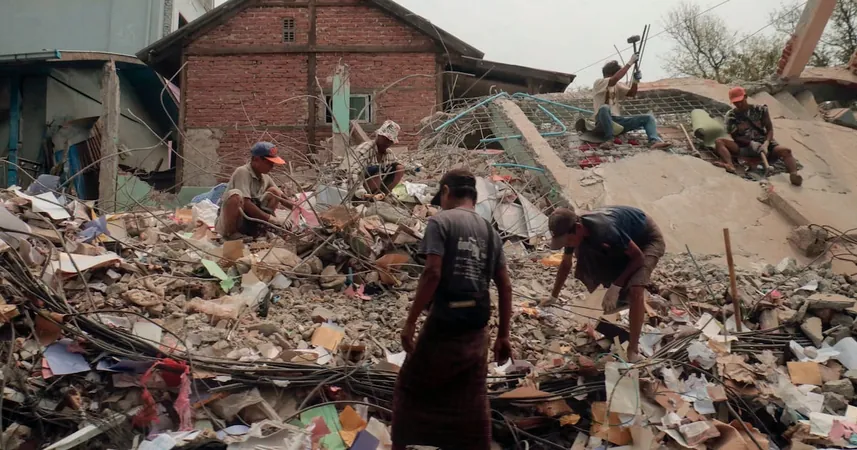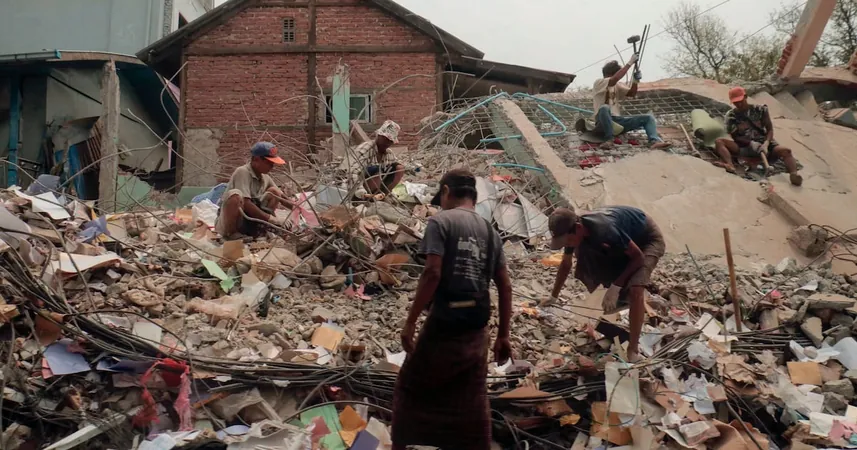
Controversy Escalates as Trump Administration Axes USAID Workers in Myanmar Earthquake Response
2025-04-05
Author: Ling
Introduction
In an alarming move, the Trump administration has dismissed three USAID employees who were deployed to Myanmar to assist in assessing the humanitarian needs following a catastrophic earthquake that struck the region. The 7.7-magnitude quake, which occurred near Mandalay on March 28, has resulted in the tragic loss of at least 3,300 lives, with thousands more injured and around 220 individuals still unaccounted for. This disaster marks a poignant moment in Myanmar’s history, being the second deadliest earthquake on record.
Reaction to Termination of USAID Workers
The terminated USAID workers had only recently arrived in Myanmar and received their termination notices via email, a seemingly heartless action that has sparked outrage among their colleagues. Sources close to the situation reported that the mood among remaining USAID staff is one of fury and concern, particularly about the future of the agency as the Trump administration continues its efforts to restructure and limit USAID's capabilities.
Criticism of Policy Changes
Critics of the Trump administration note that this sweeping change comes amidst a backdrop of major employment cuts and a significant reduction in foreign aid, including a push to place the authority of aid management in the hands of the State Department. This drastic shift raises eyebrows, especially as Secretary of State Marco Rubio had previously assured the public of ongoing support for humanitarian efforts, despite the administration’s efforts to dismantle USAID.
Concerns from Advocacy Groups
The timing of the firings has been criticized as particularly cruel, with advocates and humanitarian organizations fearful that such actions could deter future assistance and projects aimed at helping nations in crisis. Those left behind in Myanmar expressed strong sentiments about the administration's handling of such a critical moment, with deep concern about the implications for future aid efforts.
International Response
Internationally, Myanmar has received support from various countries, including Russia, China, India, and Malaysia, who have sent teams and supplies to aid in relief efforts. Neighbors like Thailand and Vietnam have also stepped in, while the U.S. has been slow to respond. Ironically, the U.S. embassy in Myanmar had earlier announced its commitment of only $2 million in aid, a fraction of the joint $20 million pledged by Australia, Japan, and India.
Conclusion
As the situation in Myanmar unfolds, the future remains uncertain for both the affected population and the fired USAID employees. The fallout from these decisions continues to raise questions about the U.S. role in international humanitarian aid and the enduring impact of these recent actions.



 Brasil (PT)
Brasil (PT)
 Canada (EN)
Canada (EN)
 Chile (ES)
Chile (ES)
 Česko (CS)
Česko (CS)
 대한민국 (KO)
대한민국 (KO)
 España (ES)
España (ES)
 France (FR)
France (FR)
 Hong Kong (EN)
Hong Kong (EN)
 Italia (IT)
Italia (IT)
 日本 (JA)
日本 (JA)
 Magyarország (HU)
Magyarország (HU)
 Norge (NO)
Norge (NO)
 Polska (PL)
Polska (PL)
 Schweiz (DE)
Schweiz (DE)
 Singapore (EN)
Singapore (EN)
 Sverige (SV)
Sverige (SV)
 Suomi (FI)
Suomi (FI)
 Türkiye (TR)
Türkiye (TR)
 الإمارات العربية المتحدة (AR)
الإمارات العربية المتحدة (AR)